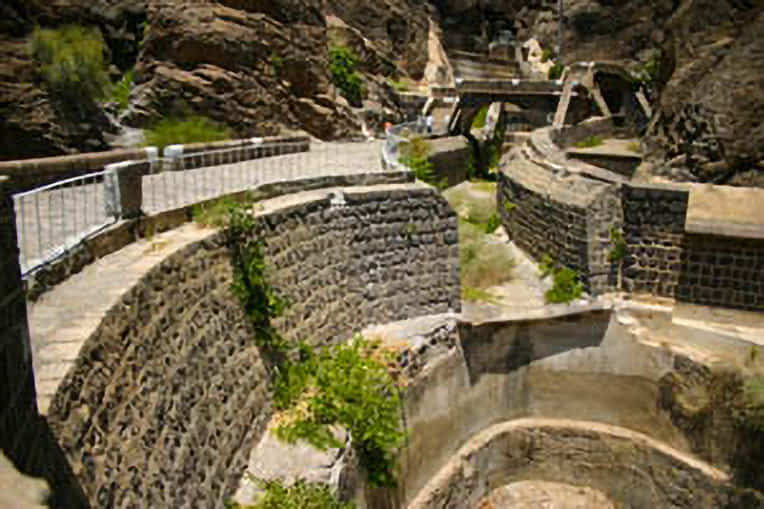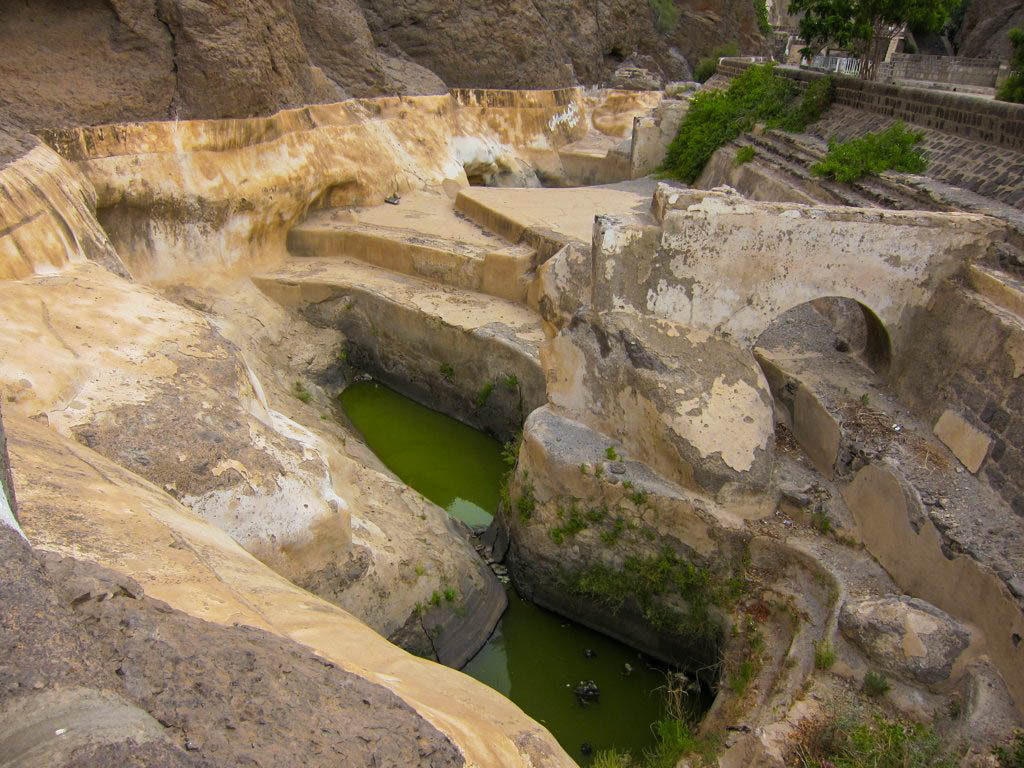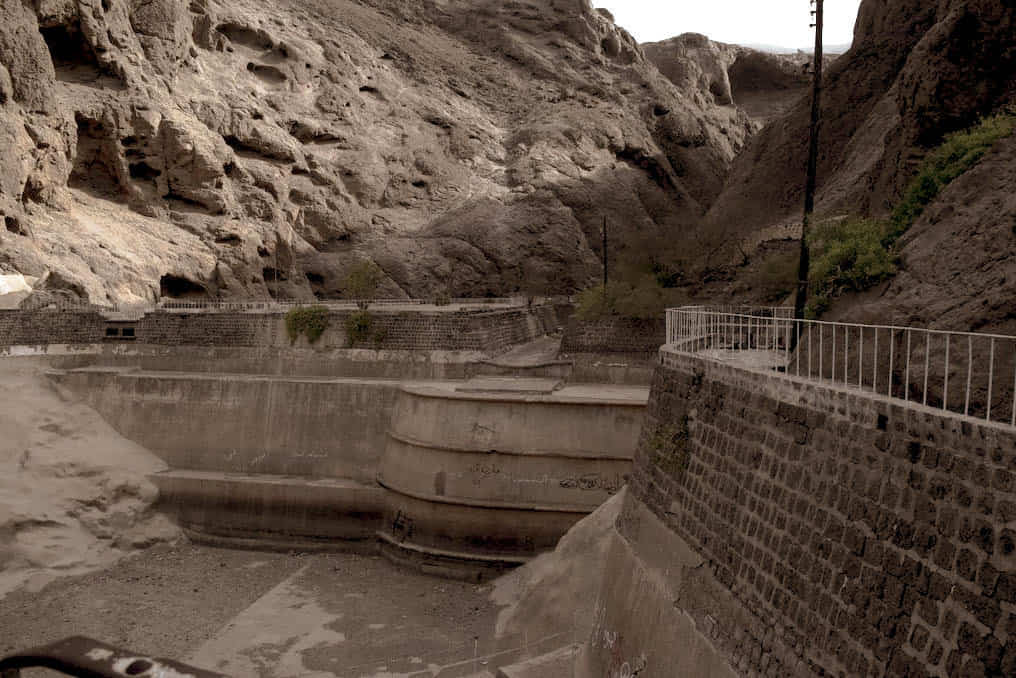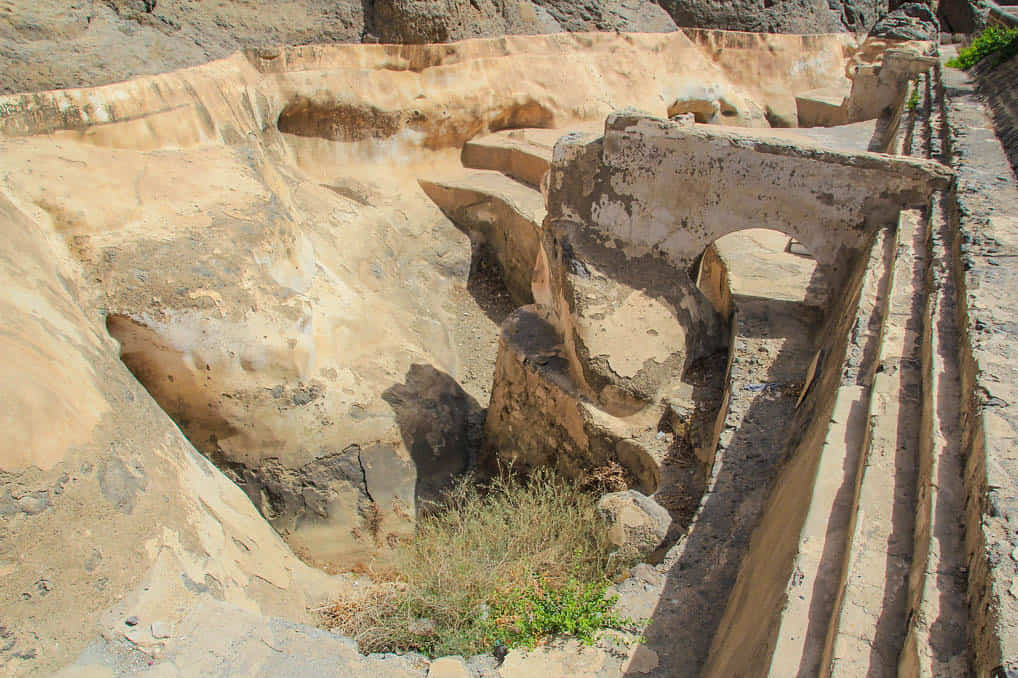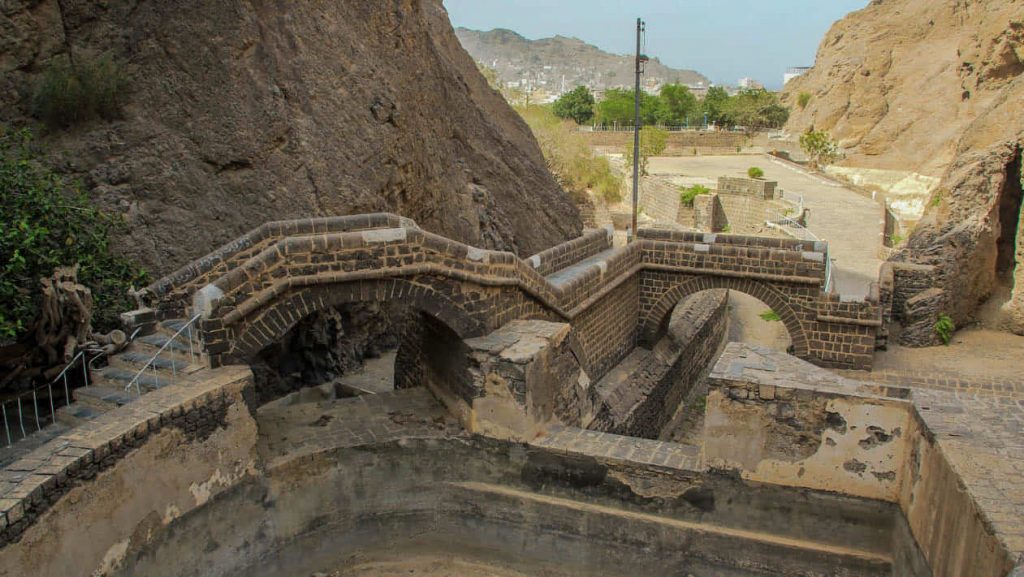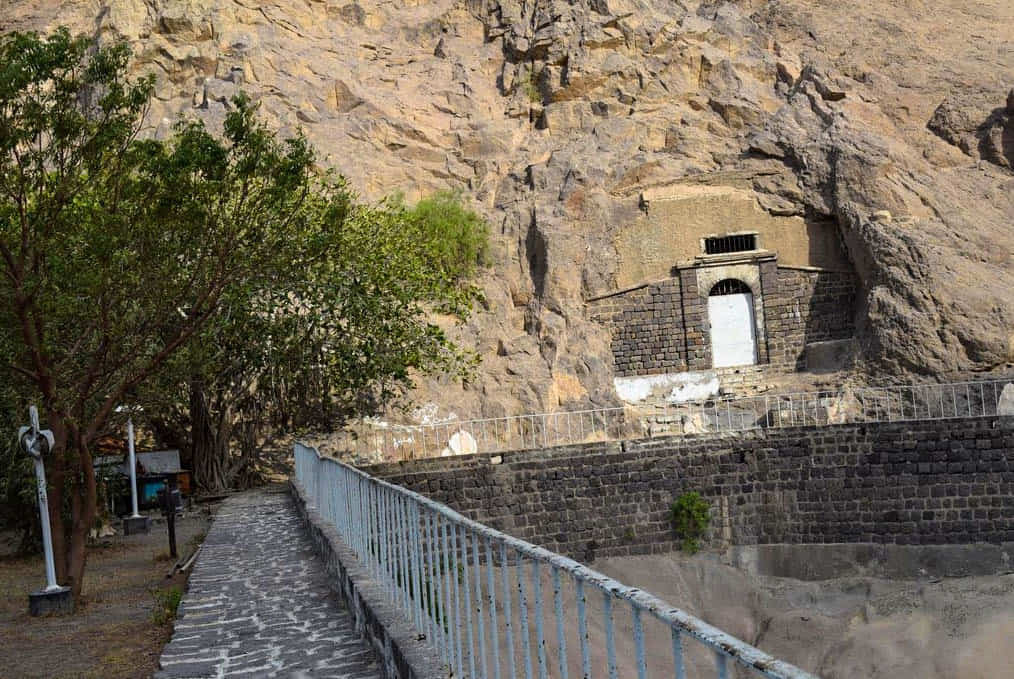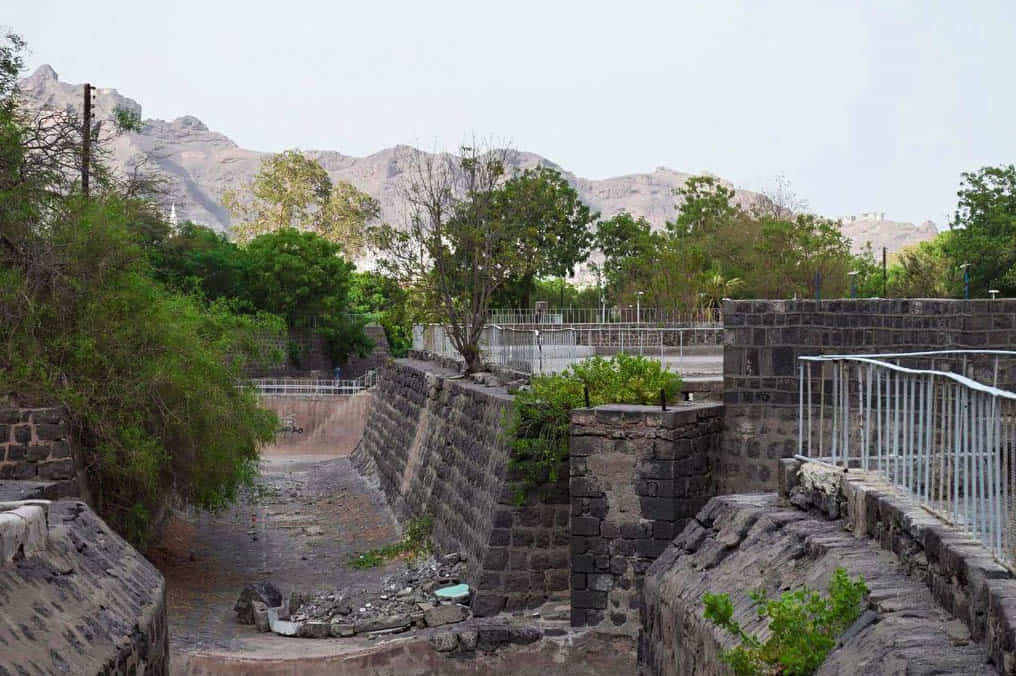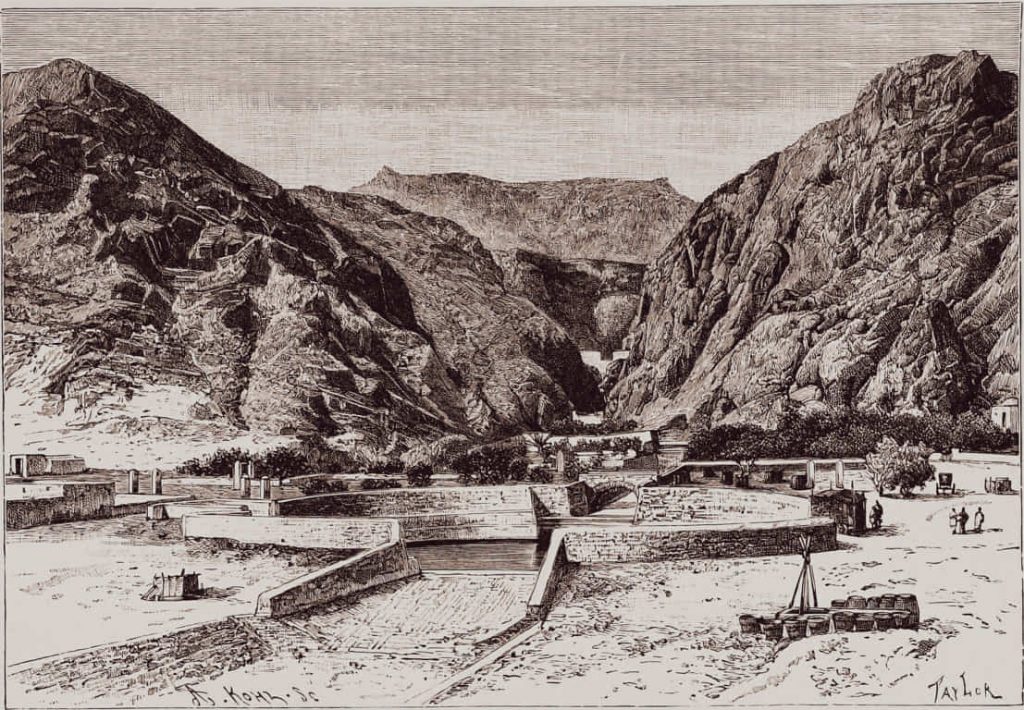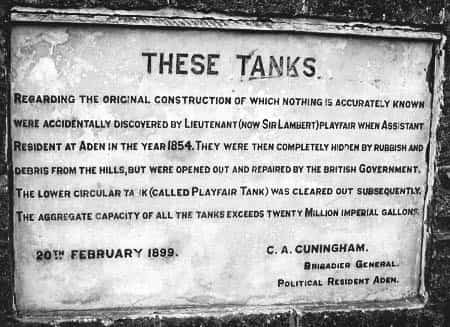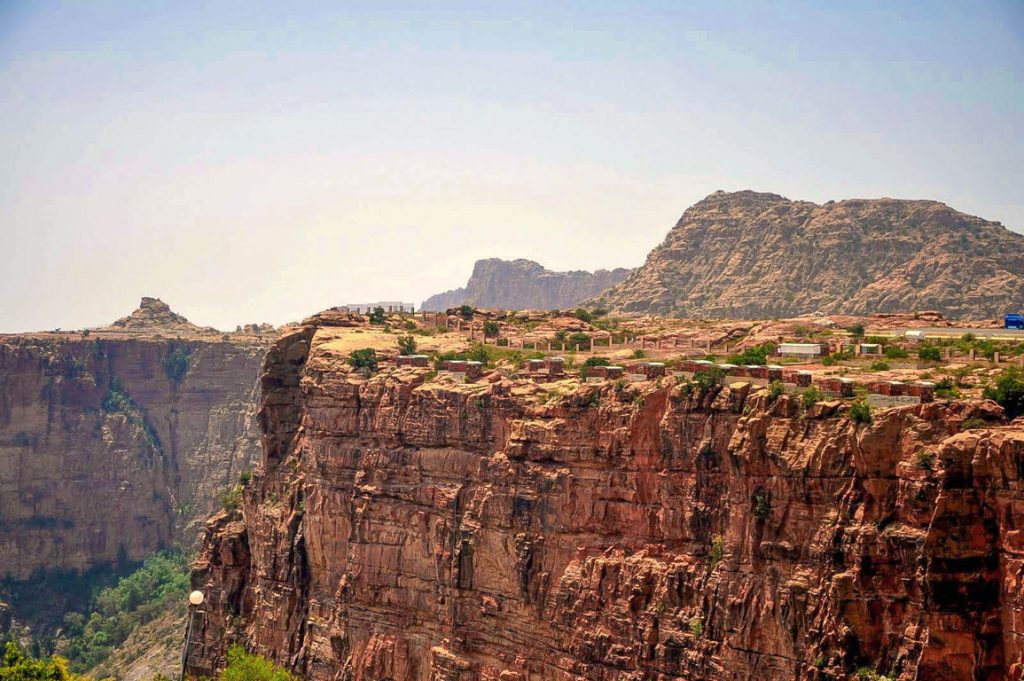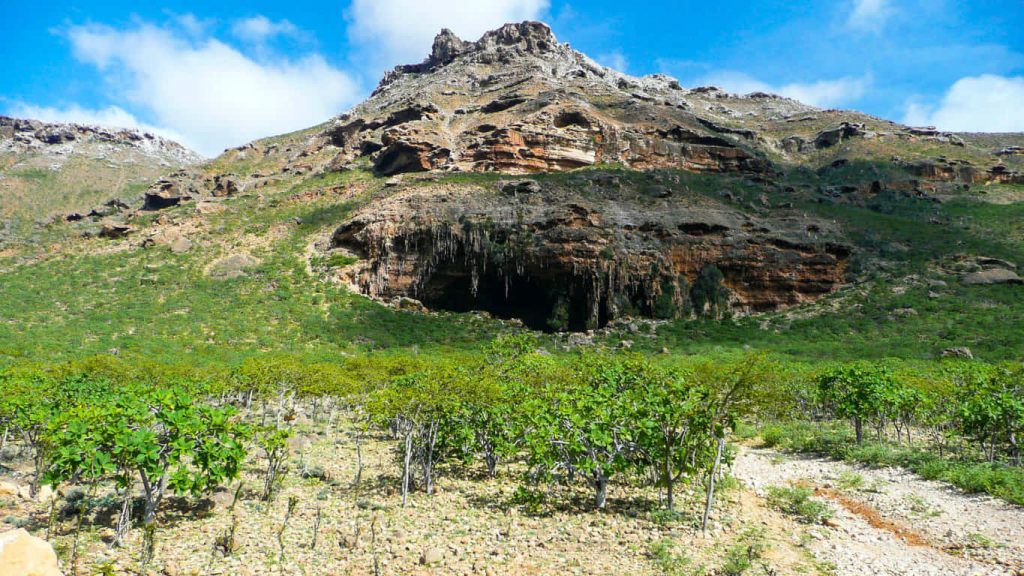Aden, Yemen
Coordinates: 12.774004, 45.029079
Nearby Places
- Hz. Al Aidrus r.a mosque and Tomb 0.88 kilometers E (106°)
- Sira Castle 2.32 kilometers E (75°)
- Al ghareeb tree 124.00 kilometers NW (295°)
The Cisterns of Tawila, or the Tawila Tanks, are the best-known historic site in Aden, Yemen. The site consists of a series of tanks of varying shapes and capacities. They are connected to one another and located in Wadi Tawila to the southwest of Aden’s oldest district, Crater. Originally there were about 53 tanks, but only 13 remain following a succession of renovations, including those done by the British in the 19th century.
Creation
The tanks were hewn from the volcanic rocks of Wadi Tawila and then lined with a unique concrete that included volcanic ash to create a robust and natural cement that rendered the tanks’ walls impermeable to retain water for extended periods.
Who Build it
Visitors to the Tanks are often surprised by the words on a plaque near the Coghlan Tank: “Regarding the original construction of which nothing is accurately known…” There is indeed little hard evidence, and there are few reliable sources of information about the Tanks. One theory is that Himyar, a pre-Islamic Arabian kingdom that ruled parts of Yemen from 115 B.C. to 525 A.D., started to build water tanks in the area that eventually became the Cisterns of Tawila. The Himyarites are known to have employed water-catchment tanks in other areas under their rule.
Mentioned by Islamic Scholars
The Tanks were mentioned in some manuscripts after the coming of Islam to Yemen in the 7th century A.D. “Aden has Tanks that store water when the rain falls,” wrote Al-Hamdani in the 10th century. Al-Makdsi, writing three centuries later, also recorded the presence of wells and cisterns in Aden. By the time of the Rasulid dynasty (1229-1454 A.D.), the Tanks had fallen into disrepair. However, the Rassulids recognized the utility of the Tanks and began to restore them. This restoration has led some to claim that the Rassulids built the Tanks, thereby obscuring what are, in all probability, the far more ancient origins of the Tanks. After the Rassulids, the Tanks fell into disrepair, damaged by flooding and neglect, and filled with the rubble of successive floods.
Close-up of Cisterns
Today, the cisterns are primarily a public park and a tourist attraction. They have not been filled for at least fifteen years and do not serve the city’s water needs. No significant restoration work has been conducted on the Tanks since the British colonial era ended in 1967. Time, floods, and visitors have taken their toll on the structures.
Know This
You can visit the tanks at any time. One can leave the usual route and branch left after Playfair Tank, on a faint track over the hills, you will find all sorts of hidden tanks stretching way up into the hills. Sometimes the gate is locked. Just climb over it. Entrance fee is around ( 100 YER = 0.46 $).
Authority here is careless in maintaining this historical site. Sometimes the guard vanishes in the opening hours locking the door. The graffiti made by ignorant people is disgusting. They are ugly and severely affect the beauty of the site. There are no bathrooms or any basic shop ( bring Cool water with you as you will need it, especially in a city known for its hot weather like Aden), maybe because they wanted the place to stay clean from the Garbage. While it’s possible to bring your family and have lunch under one of the large trees there
Be careful of some stairs. They are so steep and may hurt your leg, but it’s nice to try being inside one of those tanks.
Sources
Image Sources
Tanks5
GFDL, https://en.wikipedia.org/w/index.php?curid=13074791
Tanks1
GFDL, https://en.wikipedia.org/w/index.php?curid=13074776
Tanks4
GFDL, https://en.wikipedia.org/w/index.php?curid=13074795
Cisterns_of_Tawila
By العمري – http://alamree.net/aden_39_022.htm, Public Domain, https://commons.wikimedia.org/w/index.php?curid=39204035
Cisterns_of_Tawila_Aden
By Internet Archive Book Images (Αρχικό) Wolfymoza (Ανέβασμα) – Image from page 648 of “The universal geography : the earth and its inhabitants” (1876), No restrictions, https://commons.wikimedia.org/w/index.php?curid=38179973
2880px-Cisterns_of_Tawila_-صهاريجعدن_-_panoramio
By Tariq Ahmed, CC BY-SA 3.0, https://commons.wikimedia.org/w/index.php?curid=53291080


